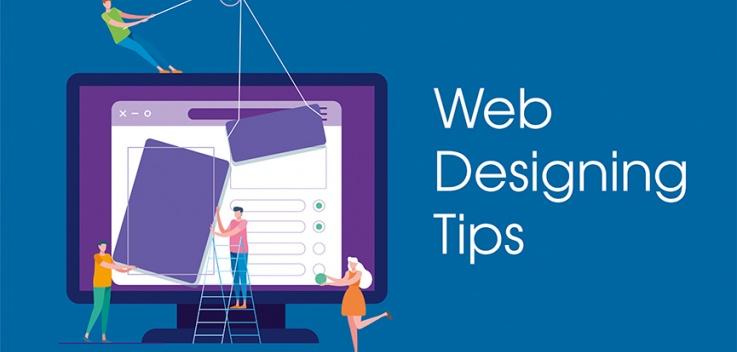9 fundamentals of effective web design applied in Manchester9 fundamentals of effective web design applied in Manchester

An efficient website design should carry out its intended function by successfully communicating the site’s intended message while simultaneously capturing the attention of site visitors. The design of a website may be improved in a number of ways by focusing on its consistency, colors, font, graphics, simplicity, and usefulness, among other things.
With the sole goal to deliver original and quality services, Markustudio has grown rapidly, a freelance web designer in Manchester providing web design, logo branding, print, SEO and digital design services. If you need help creating a style guide or staying consistent with your branding, our team of experts is here to assist you.
When it comes to the design of a website, there are a lot of important variables that will contribute to how people feel about it. A website that has been well created can help visitors feel more at ease and direct them toward taking action. Making ensuring that the design of your website is optimized for usability (both in terms of form and aesthetics) and determining how easy it is to use are both essential steps in the process of creating a fantastic user experience (functionality).
When planning your subsequent website project, the following suggestions will be of use to you.
1. WEBSITE PURPOSE
Your website absolutely must be able to fulfill the requirements of the user. It will be easier for the user to interact with what you have to offer if you have a straightforward objective stated clearly on each page. What are you hoping to accomplish with this website? Are you providing step-by-step instructions or other useful information, much like a “how to” guide? Is it a website that provides amusement, such as sports news, or are you trying to sell something to the user? Websites can serve a wide variety of functions, but there are some fundamental goals that every website should strive to achieve.
- Describing Expertise
- Constantly Working to Build Your Reputation
- Generating Leads
- Sales and Customer Service Following the Purchase
2. SIMPLICITY
When thinking about the user experience and the usability of your website, the best approach is to keep things as simple as possible. The following are some ways that simplicity can be achieved through design.
Colour
Color has the ability to convey meaning and stimulate a variety of feelings and emotions in people. You will have the ability to impact the way in which your customers behave towards your brand if you are successful in locating a color palette that is congruent with your brand. Maintain a color selection that is comprised of fewer than 5 different hues. The use of colors that complement one another is quite effective. The user will have a positive experience and increased customer engagement when pleasing color combinations are used.
Type
Your website’s typography is an essential component of its design and functionality. It draws attention to itself while also functioning as a visual depiction of the brand voice. The website should utilize no more than three distinct fonts total, and the typefaces used should be easily readable.
Imagery
Imagery refers to any and all visual components that are utilized throughout communications. This encompasses the various forms of graphics as well as still photography, illustration, and video. The company’s brand personality should be embodied in all of the images, and it should be expressive, capturing the essence of the business and serving as a representation of that. The majority of the first information that we take in on websites is visual, and as a first impression, it is crucial to employ high-quality photos to build an impression of professionalism and credibility in the eyes of the visitors.
3. NAVIGATION
On websites, the navigation system is the wayfinding system that allows visitors to engage with the site and discover what they are looking for. The navigation of a website is essential to maintaining visitors. If the navigation on the website is difficult to understand, users will abandon the site and look elsewhere for the information they require. The navigation should be kept as straightforward, understandable, and uniform as possible across all pages.
4. F-SHAPED PATTERN READING
The F-pattern is the most prevalent way that website users skim the text that is presented to them on the page. Eye-tracking research has shown that the majority of what individuals perceive is concentrated in the upper left and upper right corners of the screen. The F-shaped layout is a representation of the natural reading pattern that we have in the West (left to right and top to bottom). A website that has been efficiently created will fit with the natural pattern of scanning the page that is used by the reader.
5. VISUAL HIERARCHY
The arrangement of elements in a composition in the order of their significance is known as visual hierarchy. This can be accomplished by the use of size, color, images, contrast, typography, white space, texture, or style. The establishment of a focal point is one of the most significant tasks of visual hierarchy since it demonstrates to visitors where the most relevant information is located.
6. CONTENT
Both the site’s design and its content need to be of high quality for it to be considered successful. The use of persuasive language and interesting content can attract and influence visitors, ultimately leading to the conversion of those visitors into customers.
7. GRID BASED LAYOUT
Grids lend a hand in structuring your design and assisting in the organization of your information. The grid provides assistance in aligning objects on the page and maintaining the page’s cleanliness. A grid-based style organizes the information of the website into a neat and rigorous grid structure with columns, sections that line up and seem balanced, and sections that enforce order. The end result is a website that is both visually beautiful and functional.
8. LOAD TIME
Visitors who are forced to wait for a website to load will leave. A little less than half of people who visit a website have the expectation that it will load quickly two seconds or less, and if it takes more than three seconds, there is a chance that they will leave the website. If you optimize the sizes of your images, your website will load much more quickly.
9. ACCESSIBLE VIA MOBILE DEVICES
Web browsing on mobile phones and other portable devices is becoming increasingly popular. It is essential to give some thought to developing a responsive layout for your website, which allows the site to adapt its appearance to different screen sizes.

